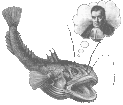UW Aquatic & Fishery Sciences Quantitative Seminar
Maia Kapur
Fisheries Assessment Specialist, Pacific Islands Fisheries Science Center (NOAA)
Modeling the effects of selective harvesting on Kona crab (Ranina ranina) in the Main Hawaiian Islands
Abstract
The Kona crab (Ranina ranina) is a widely dispersed crustacean harvested for commercial and recreational consumption throughout the tropical Pacific. It is one of the principal commercially harvested crab in the Hawaiian islands. Restrictions on the Hawaii Kona crab fishery began in 1938 with a minimum 4-inch carapace size limit for selling of crabs, a no-take of berried female crabs and a closed season from June through August. The most recent regulation prohibiting the taking of any female crabs was implemented in September of 2006, with the aim to protect large, fecund female crabs. This study provides demographic and risk analysis to examine the effects of varied harvest scenarios, wherein females undergo 0-90% post-release mortality under a suite of minimum capture sizes, to identify trigger points of population decline in a stochastic framework. The results indicate that, when selectivity includes crabs less than legal size, a post-release mortality value greater than 62% has a significant negative impact on r for this population. Although this study sourced multiple modern biological methods to model the growth, reproduction and mortality of crustaceans, it makes many assumptions about their population dynamics and ability to respond to fishing pressure. We look forward to audience feedback regarding the simulation approach and best representations of crustacean biology.

